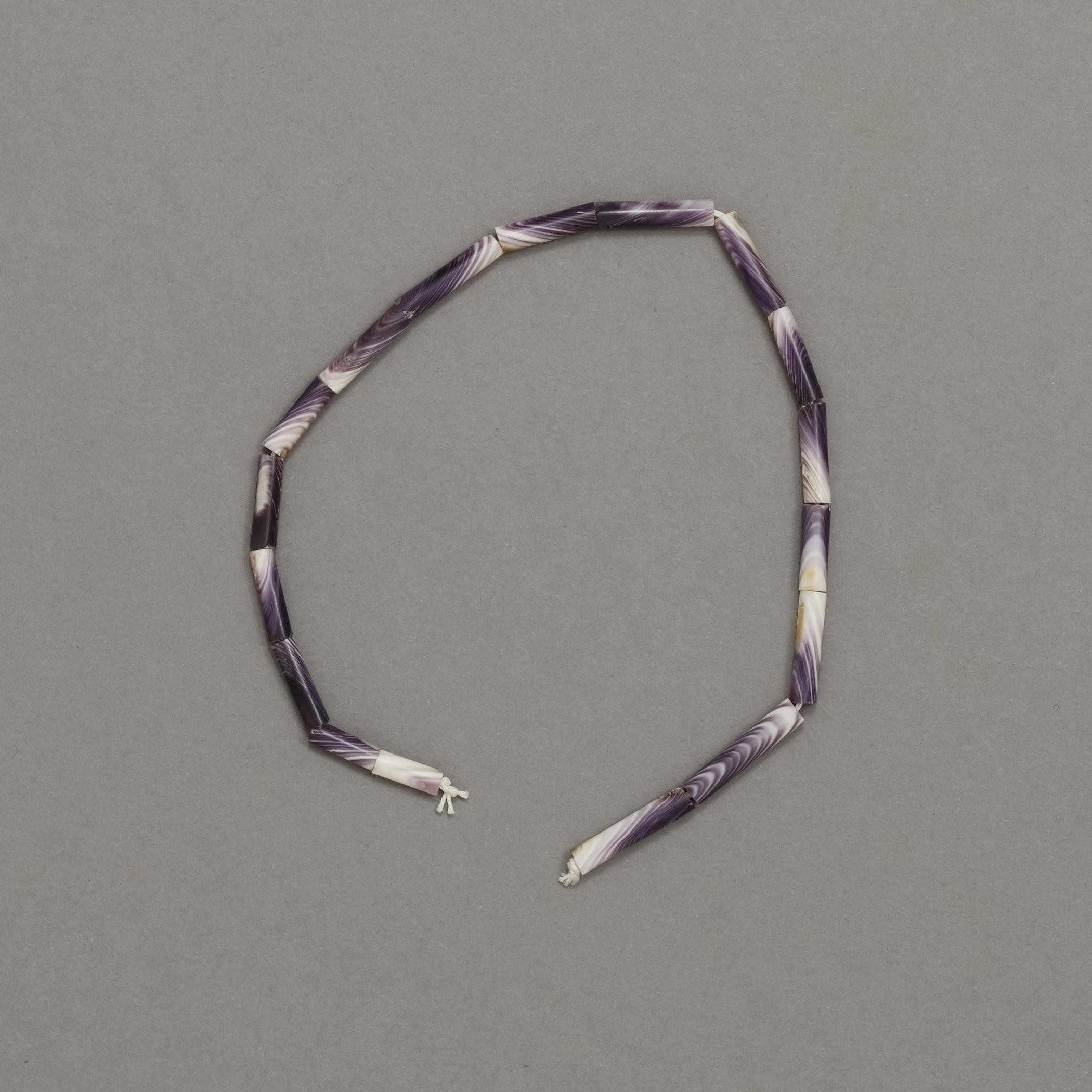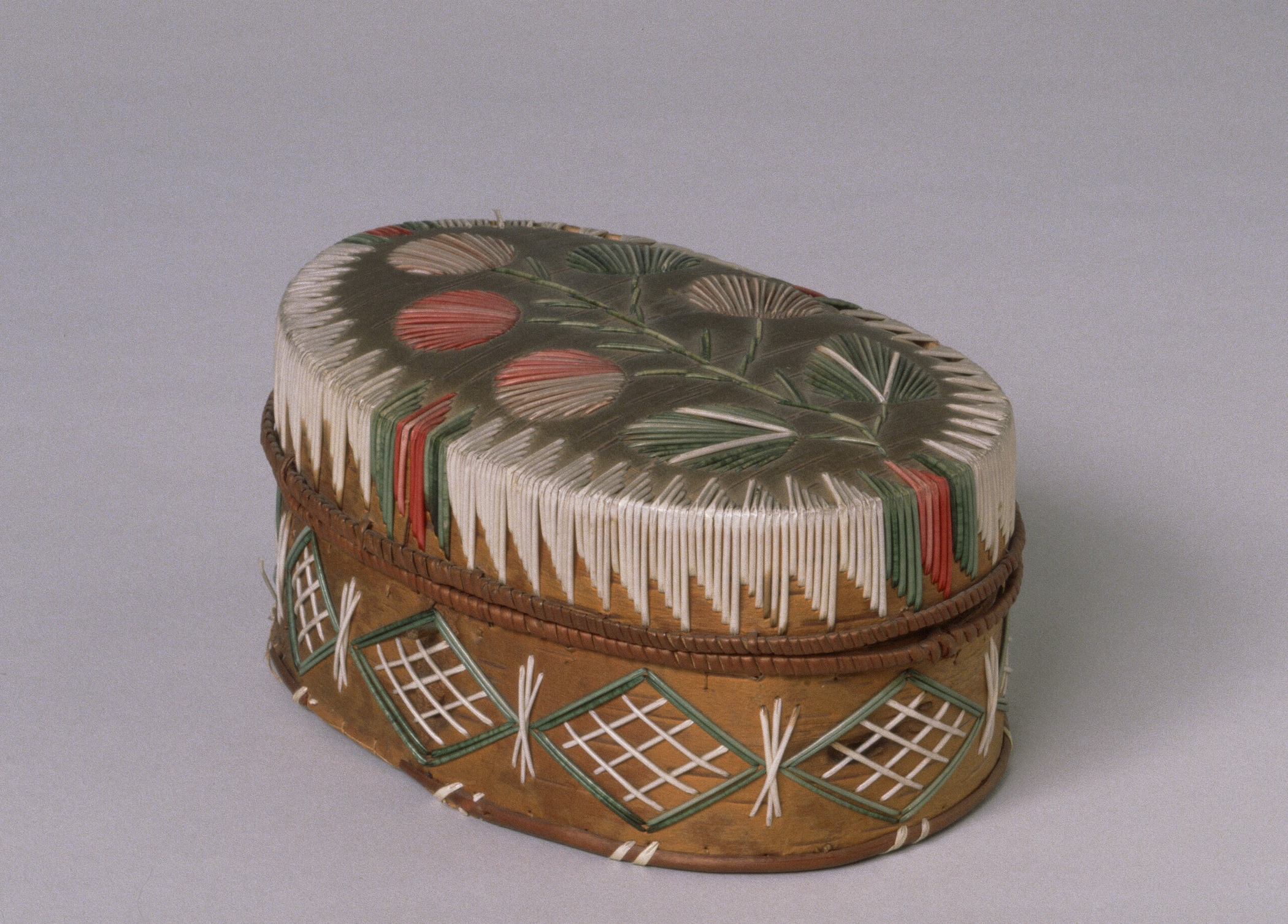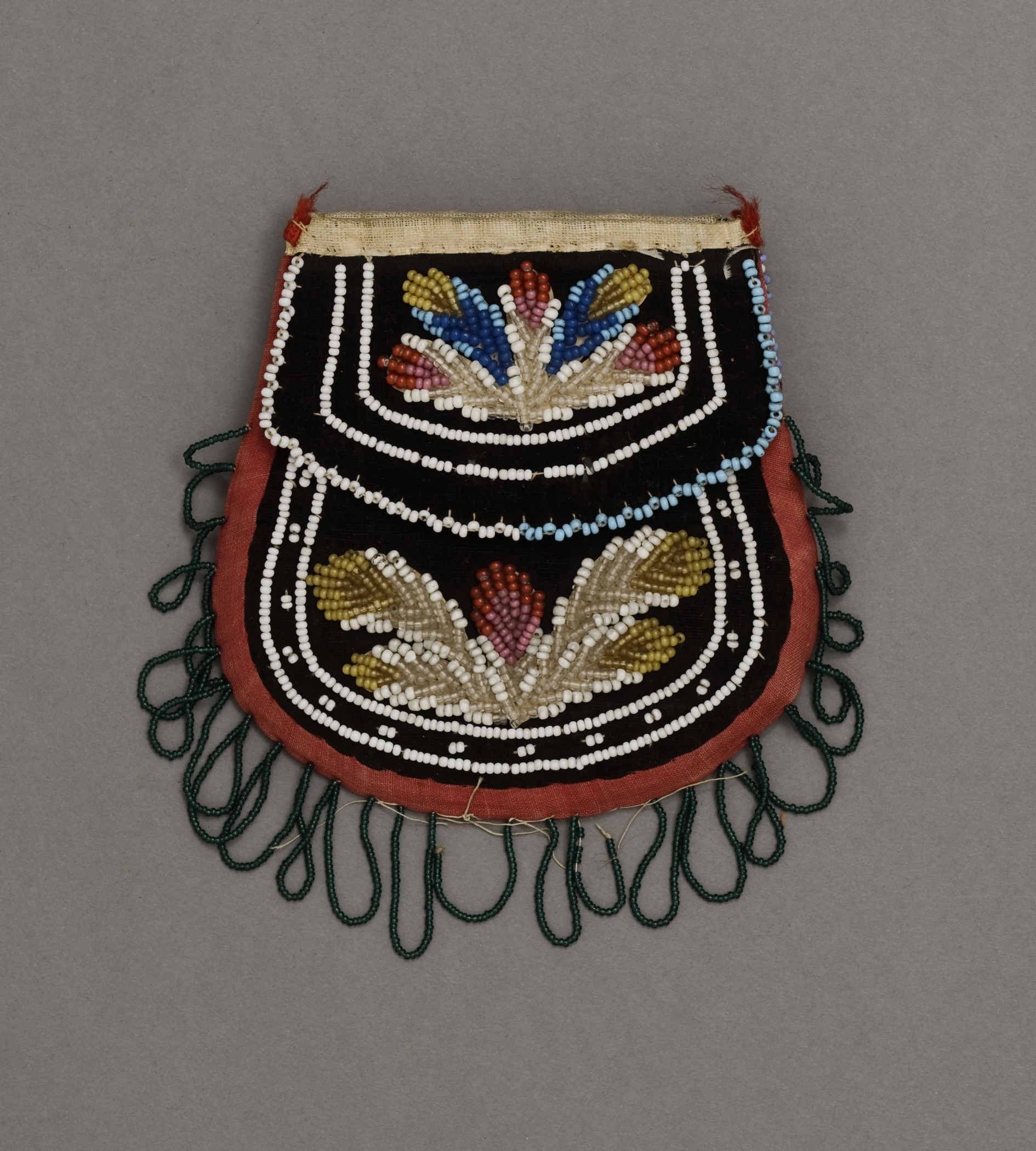Campbell Brothers Wampum Factory, Park Ridge, New Jersey, American, 1860–1889
Wampum (string of purple beads)
- Late 19th century
- Beads
Hood Museum of Art, Dartmouth College: Acquired by exchange from the Museum of the American Indian, New York, New York; 55.32.13312
visibilityLook & DiscussNortheast Woodlands tribes originally made wampum—beads made by hand from whelk and clamshells—for use in tribal records and ceremonies. Later, wampum served as a kind of currency between Native Americans and Europeans and to commemorate the signing of treaties. Before industrialization, wampum beads were difficult to make and highly valued.
Wampum, whelk, can clam shells
Native people did not make the wampum beads in the Hood Museum of Art’s collection. They were made with machines in a Campbell Brothers mill in the 19th century. Fur traders purchased wampum from the Campbell mill to use in trade with Native people. Between 1835 and 1866, the Campbell mill produced a million purple beads a year.
Explore the object
To make wampum, native people harvested and ate clams before working their purple and white shells into beads. They broke the shells, which shatter easily, and polished them into cylinders with a series of stones. The wampum maker used a stone drill to form a channel in the small tubes. Whelk shells were often carved into white discs. Craftspeople then placed the shells on strings made of plant fiber or animal tendon and wove them into belts, necklaces, headpieces, bracelets, and earrings. The ability to wear these personal adornments varied depending on the status of the wearer.
The color of the beads had meaning. For many Woodlands people, white beads represented concepts like purity, life, and light. Purple beads represented more somber things like war and death. The combination of white and purple represented the dual nature of the world—light and dark, women and men, life and death. Native people gave wampum as gifts for births, marriages, and deaths, in accordance with its color. They also wove wampum into patterns that told stories or conveyed messages.
Today, a small number of artists in the Northeast are still making wampum jewelry from quahog and abalone shells.




